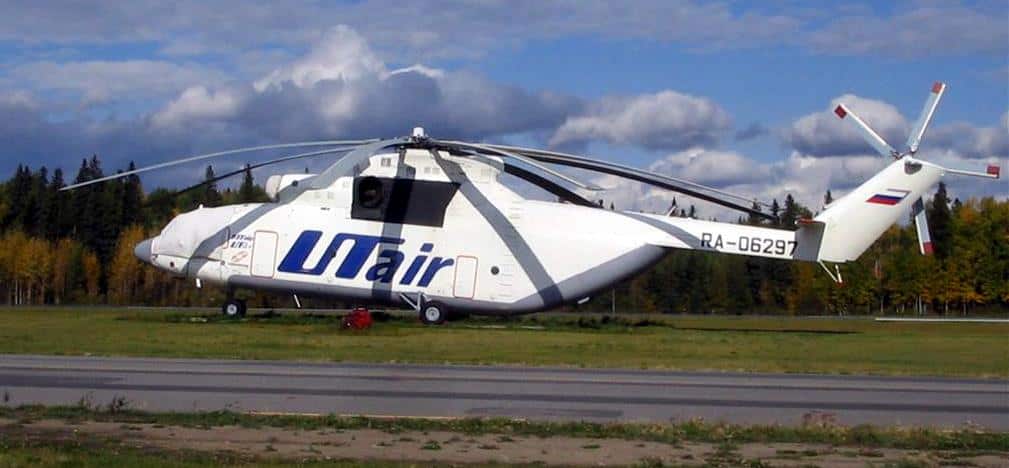
Some helicopters are big and then there is the next level. When the world’s biggest helicopter thunders overhead it gets your attention and leaves you wondering how something that big is able to fly, let alone lift anything too!
The Mi-26T2 by Russian Helicopters is the world’s largest helicopter in production. It has a rotor diameter of 105 feet, a maximum take-off weight of 123,460 lbs, and two engines that produce 11,400 hp each allowing it to lift 44,000 lbs on its hook or inside its cargo hold & costs around $25M US.
Having not long come out of flight school and used to seeing the tiny Robinson R22, seeing this behemoth parked in a faraway corner of a Canadian airfield blew me away with its sheer size, and it was across the other side of the field! I had to go and take a look at the world’s biggest helicopter and this is what I learned about it!
How Big is the Biggest Helicopter in the World?
The Mi-26T2 is a record-breaking helicopter with some very impressive dimensions:
| Imperial | Metric | |
|---|---|---|
| Length | 117 ft | 35.91 m |
| Width | 20 ft | 6.15 m |
| Height | 26 ft | 8.14 m |
| Blade Tip to Tail Tip | 131 ft | 40.02 m |
| Main Rotor Diameter | 105 ft | 32.00 m |
| Tail Rotor Diameter | 25 ft | 7.61 m |
| Empty Weight | 63,715 lb | 28,900 kg |
| Maximum Take-Off Weight | 123,460 lb | 56,000 kg |
| Maximum Cargo Weight | 44,100 lb | 20,000 kg |
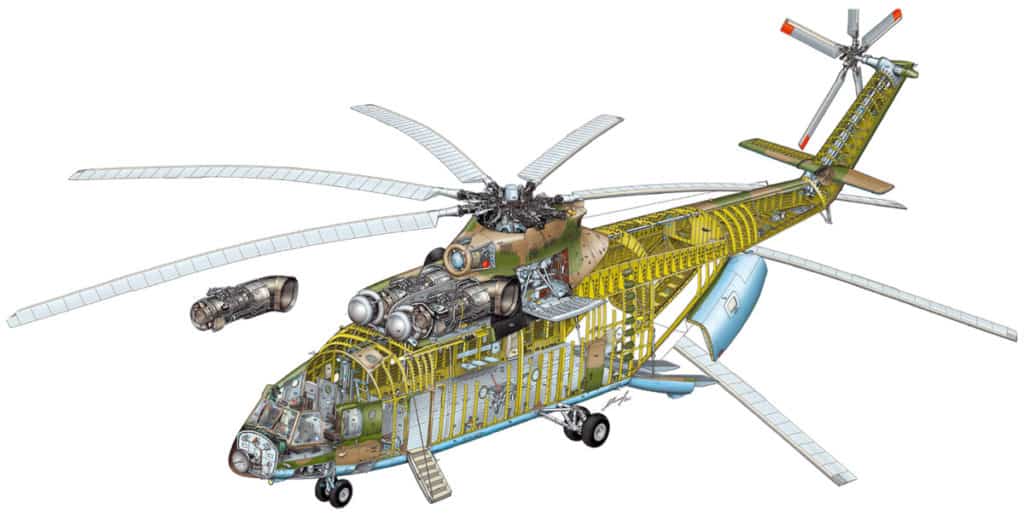
To give you some scale of the size of this helicopter the picture below was taken and the engineer is standing on the engine cowl door you can see in the diagram just behind the engine exhaust. After waving he walked inside the main transmission housing and that was the last I saw of him:
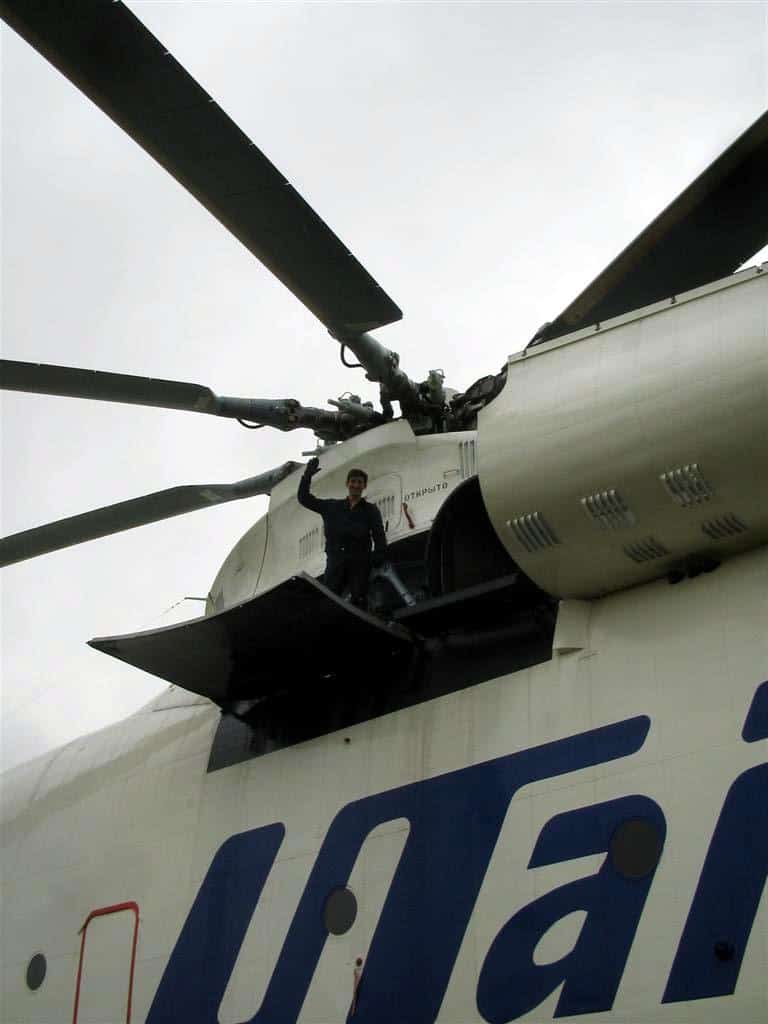
How Much Power Does the World’s Biggest Helicopter Have?
The Mi-26T2 helicopter has 2 Lotarev D-136 gas turbine engines that each produce a maximum takeoff power of 11,400 Hp or 8,500 kW. This enables the Mi-26T2 to lift over 44,000 lb or 20,000kg of cargo on its hook or inside its cargo hold and fly up to 180 mph or 295 kph.
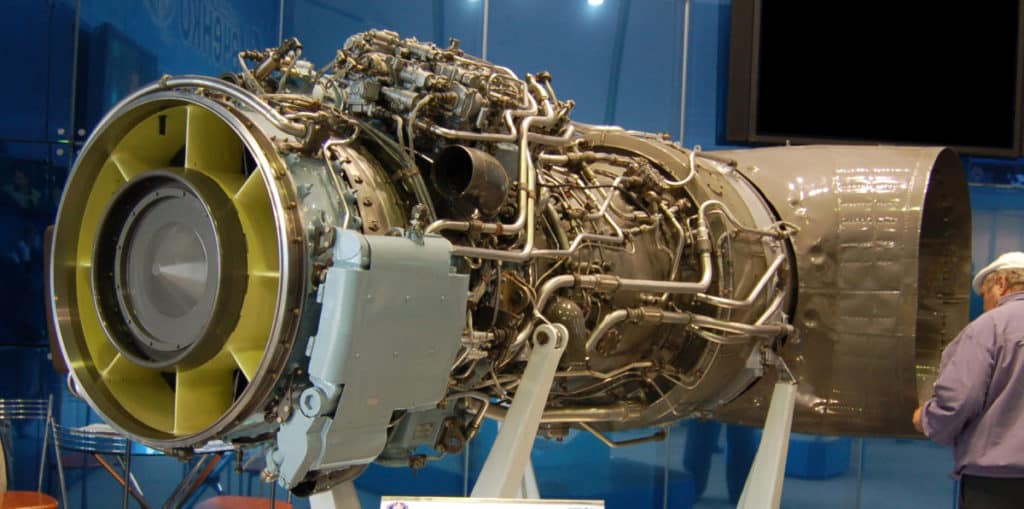
The engines are designed by the ZMKB Progress Design Bureau and manufactured by Motor Sich, both in Ukraine. Each engine consists of a 7-Stage high-pressure compressor, followed by a 6-Stage low-pressure compressor, and an annular combustion chamber containing 24 fuel nozzles, and 2 igniters.
The turbine section at the rear of the engine features a single-stage high-pressure turbine rotating at 14,170 rpm, followed by a single-stage low-pressure turbine rotating at 10,950 rpm, followed by a 2-stage power turbine rotating at 8,300 rpm +/-300rpm.
Each engine produces the following power output:
- Maximum Take Off Power = 10,000 shp / 7,500 kW
- Maximum Transient Power = 11,400 shp / 8,500 kW
- Maximum Continuous Power = 8,500 shp / 6338 kW
During cruise flight, each engine consumes jet fuel at a rate of:
- 3,859 lb / 1,749 kg per hour, or
- 567 gal / 2,213 L per hour
If you wanted to pay for the fuel at a U.S. average of $4.80 per gallon:
3,859 x2 = 7718 gallons per hour x $4.80:
$37,046 per hour just in gas!!!

Join My Newsletter & Get Great Tips, Information and Experiences To Help You Become a Superb Pilot!
How Much Can the World’s Biggest Helicopter Lift?
The Mi-26T2 can lift 44,100 lb/20,000 kg on its hook or inside its fuselage. It can also carry 82 passengers or 60 stretchers with 3 medical attendants. When configured for fighting fires, it can drop over 3,900 gal /15m3 of water in a single drop from its belly bucket.
This helicopter has 8 main rotor blades which it uses to create the lift. Each blade is 100 ft long and together they create an area of 8,657 sqft / 804.25 m2. When you do the math of the helicopter’s maximum gross weight Vs. its main rotor disk area this helicopter produces 14 lb/ft 2 or 69 kg/m2.
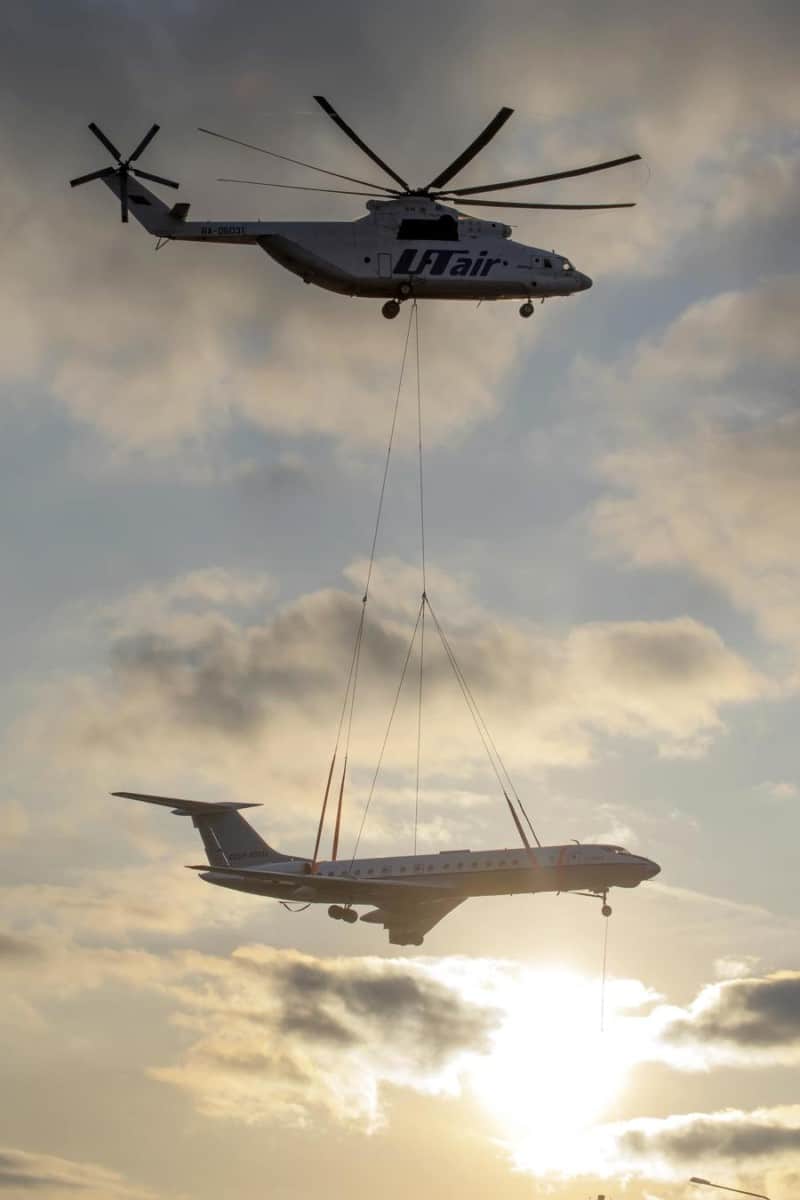
The main roles this helicopter is used for are:
- Construction Lifts
- Oil, Gas & Mining Lifts
- Military Transport
- MedEvac and Humanitarian Support
- Wildfire Fighting
- Remote Station Refuelling
Because of its sheer size, it is able to be configured into many roles to suit the customer.
Inside its fuselage, the Mi-26T2 also has a cavernous cargo area in which passengers or cargo can be placed. Its cargo hold measures:
- Length: 39.7 ft / 2.1 m
- Width: 10.7 ft / 3.25 m
- Height: 10.4 ft / 3.17m
- Payload Volume: 4,240 ft3 / 120m3
To aid in the loading and unloading of its cargo the helicopter comes equipped with two electric winches each capable of lifting/moving over 12,500 lb / 5,700 kg.
How Fast is the World’s Biggest Helicopter?
The Mi-26T2 has a top cruising speed of 160 kts / 180 mph / 295 kph, although it will typically cruise at 138 kts / 158 mph / 255 kph. It’s large rotor diameter and powerful engines overcome the huge amounts of drag created by its fuselage to accomplish this speed.
For its size, this is a fast helicopter, and even many helicopters, especially those much smaller than it cannot come close to reaching that speed. Because of the amount of power this helicopter produces from its two engines when it is carrying a light load or no load, it is able to use that excess power to drive the main rotor system through the air with ease.
As airspeed increases so does the drag acting on the fuselage. When the helicopter is under minimal load this available power is used to give the helicopter its high top speed.
What is the Biggest Helicopter Ever Made?
The biggest helicopter that was ever made was the Mil V-12. A 200 seat, twin-rotor, 4 engine helicopter with a maximum gross weight of 231,485 lb / 105,000 kg. It first flew in 1968 and only two prototypes were built and flown. They can now be found in locations in Moscow.
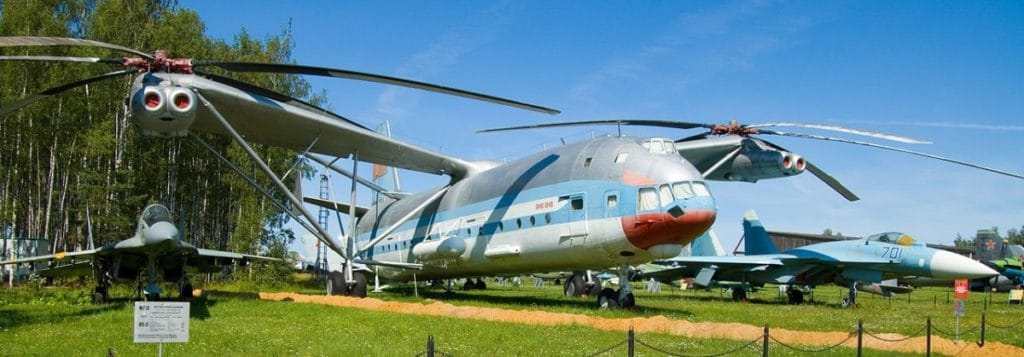
The original concept for this helicopter was to quickly transport heavy ballistic missiles, but as the development time passed it was then favored as a troop-carrying helicopter.
With a crew of 6: Pilot, Co-Pilot, Navigator, Radio Operator, Flight Engineer & Electrician this helicopter broke several world records of which some still stand to this day:
- 22 Feb1969 – Highest Altitude with a 66,000 lb / 30,000 kg payload – 9,682 ft / 2,951 m
- 6 Aug1969 – Highest Altitude with a 77,000 lb / 35,000 kg payload – 7,398 ft / 2,255 m
- 6 Aug1969 – Highest Altitude with a 88,000 lb / 40,000 kg payload – 7,398 ft / 2,255 m
The complex design of the helicopter’s main rotor system, drive train, and flight controls was thoroughly tested on test rigs and mockups before the first prototype was manufactured. Using a driveshaft between the two rotor systems allowed the main rotors to intermesh just like they do on today’s CH-47 Chinook helicopters.
However, they found having the main rotor at the front and rear of the helicopter caused uncontrollable oscillations that were cured once the two main rotor systems were moved out to the sides of the fuselage.
Large clamshell doors and a loading ramp at the rear of the helicopter allowed for easy access to the extremely large cargo hold within the fuselage that could carry over 195 passengers or 88,000 lb / 40,000 kg of cargo!
Due to increasing development costs and the dwindling need for such a helicopter, the program was terminated in 1974 with only two prototypes ever being built. The second of the two prototypes is now on display at the Central Air Force Museum – Moscow, with the first prototype being stored at the Mil Moscow Helicopter Plant.
Further Reading
If you found this article interesting may I suggest a few more for you to read:

